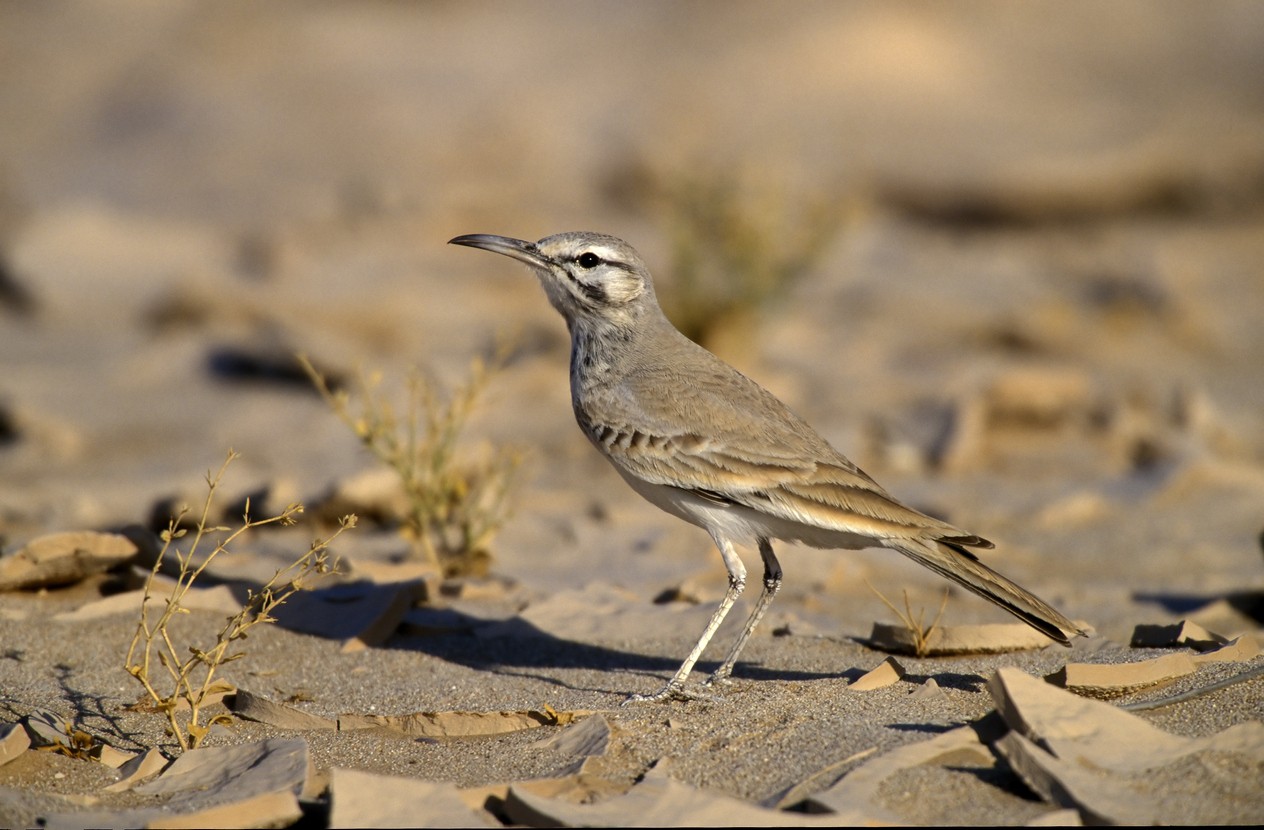Greater Hoopoe-lark
A species of Hoopoe-larks Scientific name : Alaemon alaudipes Genus : Hoopoe-larks
Greater Hoopoe-lark, A species of Hoopoe-larks
Botanical name: Alaemon alaudipes
Genus: Hoopoe-larks
Content
Description General Info

Description
This lark is large, long-legged and slender-bodied with a distinctive down-curved bill. The face has dark markings including a line through the eye and whisker like-lines from the base of bill running under the eye. The breast is spotted and the underside is buffy white while the upper-parts are sandy grey. The female is slightly smaller with less prominent markings and the bill is slightly shorter. The hind claw is short and straight. The curved upper beak has the nostril opening exposed. The tongue is bifid at the tip. 
Size
23 cm
Nest Placement
Ground
Feeding Habits
Greater Hoopoe-lark primarily feeds on various invertebrates, regionally varying but including beetle larvae, grasshoppers, termites, ant-lion larvae, and snails, with occasional small lizards and some seeds and greenery. Greater Hoopoe-lark typically forages alone or in pairs, digging in the soil to unearth prey and employing techniques like dropping snails from heights to break their shells. Drinking water is not a requirement for greater Hoopoe-lark.
Habitat
The greater Hoopoe-lark typically resides in arid environments, favoring desert or semi-desert regions. These birds are found in open plains or undulating terrains characterized by sandy soils with a scatter of vegetation or in areas combining gravel with sandy soils. Their preferred habitats include lowland regions, particularly those featuring a mix of compact sandy spots and vegetation, like Nucularia bushes in coastal zones. The presence of sand or soft, bare ground is crucial to their habitat.
Dite type
Insectivorous
General Info
Feeding Habits
Bird food type
Behavior
Birds are seen singly or in pairs as they forage by running or walking in spurts, probing and digging the ground. They have been recorded to feed on the fruiting bodies of certain fungi. The breeding season is mainly after the first rains, in India most records are from March to July. Late records in August when the rains were delayed have been noted in India. The courtship display of the male consists of rising with fluttering wing-strokes and then diving down with closed wings to a perch. The slow flappy start to the song flight recall a hoopoe for which this species is named. The striking wing pattern of black wing feathers with a white base and trailing edge; and a white tail with black outer feathers are displayed in flight. The male also sings with rising and falling notes consisting of trilled whistles and clicks that have been transcribed as a tee-tee-tee followed by a prolonged tee-hoo while nosediving. The typical call is a rolling zreee or too. The nest is a cup made up of small sticks and placed on a low bush or on the ground, sometimes at the base of a bush. The nest is prominent and often placed on an isolated bush. Two or three eggs are laid and both sexes take turns in incubation. They feed on insects and other invertebrates, small lizards and seeds. Young birds are capable of swift running even before they can fly. The female may perform distraction displays when the young or nest are threatened. During the heat of the day, they may shelter in the burrows of Uromastyx lizards. The water loss through their skin varies with temperature and they are able to live in very arid conditions. Their breeding is dependent on the rains and in very dry years they may not breed. 
Distribution Area
The wide distribution consists of several populations that have been designated as subspecies. These include boavistae of the Cape Verde Islands, the nominate alaudipes of the north African Sahara region and northern Arabia. Subspecies desertorum has been assigned to the populations along the Red Sea coast while the eastern population of Iraq, Pakistan and north-western India are assigned to doriae. Forms like pallida and variety cinerea are included in doriae. 


Scientific Classification
Phylum
Chordates Class
Birds Order
Perching birds Family
Larks Genus
Hoopoe-larks Species
Greater Hoopoe-lark